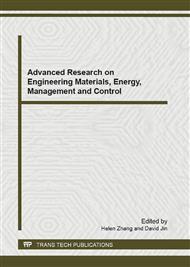p.793
p.796
p.801
p.805
p.811
p.817
p.821
p.824
p.828
Study on Slag Entrapment of Molten Steel in Mold with Electromagnetic Stirring Technology
Abstract:
Considering the process conditions of the continuous billet casting, this paper has studied the slag entrapment behavior of molten steel in mold by using of a water model, and analyzed the influence rules of the submerged nozzle immersion depth, the electromagnetic stirring intensity and the mould flux viscosity on the slag entrapment in mold. The results show that the surface velocity in meniscus gradually increases with the stirring intensity increasing and the submerged nozzle immersion depth decreasing. When the submerged nozzle immersion depth is shallower, the mould flux viscosity is lower, and the stirring intensity is high, the interface turbulence of the liquid steel and slag is more severe, slag entrapment may occur in the extreme state. In order to avoid the slag entrapment in the working condition, it is necessary to increase the submerged nozzle immersion depth and decrease stirring intensity mildly.
Info:
Periodical:
Pages:
811-816
Citation:
Online since:
January 2012
Authors:
Price:
Сopyright:
© 2012 Trans Tech Publications Ltd. All Rights Reserved
Share:
Citation:


